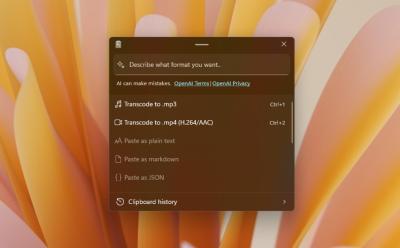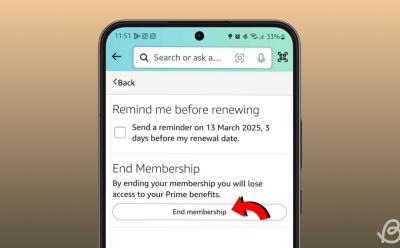The Nothing Phone (3) lands in 2025 as one of the year’s most talked-about smartphones, arriving with bold promises and a price tag of $899 that pits it against established flagships like the Galaxy S25 and the iPhone 16. After weeks of real-world use in demanding conditions—from the Delhi monsoon to the chaos of moving homes and a cross-country journey to the Gateway of Northeast India—I’ve taken a thorough look at what this device brings to the table, what it sacrifices, and whether its distinctive design and software philosophy are worth the investment. This review dives deep into every facet of the Nothing Phone (3), from its packaging and build to its performance, camera capabilities, and software experience, with attention to how these elements cohere (or clash) in daily life.
Box Contents
Nothing Phone (3)
USB Type-C to Type-C cable
SIM Ejector tool
Paperwork
The contents of the Nothing Phone (3) box reflect the brand’s minimalist packaging ethos, yet they also hint at broader design decisions that influence the user experience from the moment you unbox. The phone itself is the centerpiece, but the accompanying accessories—while succinct—play a role in shaping the first impressions and practical usability. The USB Type-C to Type-C cable is standard fare for fast charging and reliable data transfer, ensuring compatibility with most modern chargers and laptops. The SIM ejector tool is a compact necessity for dual-SIM setups or eSIM management, and the included paperwork provides essential warranty and safety information, as well as regulatory notes that matter for travelers and international users. But beyond these basics, the box content feels intentionally sparse, signaling Nothing’s preference for a lean, almost ceremonial packaging approach that aligns with its design-forward brand image.
In practice, what you don’t find inside the box can be as telling as what you do. There is no bundled case, which means you’ll want to purchase protection separately if you’re particular about keeping the glass back pristine and free from scratches. There’s also no dedicated charging brick included, which is a deliberate cost-saving choice that shifts some of the burden to the user—especially if you don’t already own a 65W charger that can take full advantage of the Phone (3)’s rapid charging capabilities. This packaging strategy reinforces Nothing’s emphasis on a premium, almost boutique experience, but it also introduces a practical friction point for users who expect a more complete out-of-the-box charging solution. Overall, the box contents align with Nothing’s presentation as a design-conscious, forward-looking brand that trades some traditional inclusions for a more streamlined, modern aesthetic.
Design: Familiar But Flawed
At first glance, the Nothing Phone (3) embodies Nothing’s signature design language: a transparent back panel that reveals the internal architecture in a way that’s meant to feel futuristic and open. This technopunk aesthetic has become a distinctive marker of the brand’s devices, and with the Phone (3) Nothing attempted to push this look further. The device features a flat chassis with a chamfered metal frame that traces the edges, pairing a premium-grip feel with a sense of durability. Weighing in at 218 grams, the phone feels substantial in hand—the kind of heft that signals solidity and premium build quality. In-hand ergonomics are something many enthusiasts will notice immediately; the weight distribution contributes to a sense of robustness that pairs well with the phone’s glass construction and steel framing. The back panel is protected by Gorilla Glass Victus, a testament to Nothing’s intent to deliver a high-end, scratch-resistant surface that can withstand everyday wear and tear.
One of the standout practical advantages is the IP68 rating, which proved its worth during Delhi’s monsoon rains. This level of protection offers confidence against dust and water exposure, ensuring the phone remains usable in inclement weather and occasional splashes. The overall construction feels premium, and the device carries a premium vibe similar to other top-tier flagship devices in its price bracket. The attention to materials—glass, metal, and reinforced glass protection—contributes to a sense of durability that buyers expect from high-end smartphones.
However, the back design takes a different turn when you rotate the device. Nothing has long favored an abstract, avant-garde approach to smartphone design, and the Phone (3) is no exception in spirit. The rear panel presents a tic-tac-toe-like grid composed of circular motifs rather than a conventional camera layout. This arrangement breaks traditional symmetry and makes the top camera lens appear visually unbalanced, almost as if it’s teetering on the edge. In daily use, that visual misalignment was distracting and hard to ignore, which is a personal reaction that might not reflect everyone’s taste. The result is a design that demands acclimation; for some, it reinforces Nothing’s distinctive identity, while for others it can feel off-putting or awkward.
A more polarizing change comes in the form of the Glyph Lights, Nothing’s iconic LED strips that previously complemented the design. In the Phone (3), those glyph lights have been replaced by the Glyph Matrix—a circular, top-corner display comprised of 489 tiny LEDs. The new approach promises more versatility, including notification indicators, battery status visuals, and even a playful potential for interactive uses. But here’s where perception diverges: while the Glyph Matrix introduces a novel visual element, it did not universally enhance daily utility in my experience. The minimalist enthusiasts might appreciate the subtle glow, but practical users often found it superfluous or insufficiently informative in many real-world scenarios.
In short, the Phone (3) arrives with a bold, unmistakable look that signals Nothing’s continued willingness to move beyond conventional smartphone design. The trade-off is a design that some will find eye-catching and innovative, while others may view as visually discordant or gimmicky. The absence of the old glyph-strip lighting in favor of the Glyph Matrix is a central pivot in Nothing’s design philosophy, and it’s a decision that strongly colors the device’s appeal. If you’re drawn to something visually distinct and you value a strong aesthetic statement, the Phone (3) delivers that in spades. If you’re seeking a device with a more traditional, understated silhouette, this may feel like a departure you don’t fully embrace.
Glyph Matrix: A Gimmick Without a Cause
The Glyph Matrix sits at the center of Nothing’s design narrative for the Phone (3). This circular LED grid, perched at the top corner, is a 489-LED display that serves multiple roles: it can show notifications, indicate battery percentage, function as a visual stopwatch, and even double as a selfie preview when needed. On paper, these capabilities sound far more practical and forward-thinking than Nothing’s previous glyph-based cues, and they promise a more engaging, user-friendly way to glance at device status without unlocking the screen.
To add a layer of whimsy, Nothing introduced Glyph Toys—interactive features such as spin the bottle, rock-paper-scissors, and Magic 8 Ball. These are intended to be playful, activated by a capacitive button on the back, and designed to make daily interactions with the Phone (3) more entertaining. In theory, these features offer a novel way to engage with hardware beyond the standard touch and swipe interactions.
In practice, however, the Glyph Matrix often felt more like a novelty than a critical utility. While it’s capable of displaying notifications, it doesn’t reveal essential details such as who is calling or the sender’s name without unlocking the device. This limitation means that, for most users, the Matrix primarily functions as a mood light or a gentle notification indicator rather than a quick-glance, context-rich alert system. The extra visuals rarely translate into a faster or more convenient workflow, particularly in situations where privacy and quick access to information are paramount.
From a usability perspective, the Glyph Matrix can be a blessing for those who want to minimize screen unlocks and reduce distraction—there’s a certain serenity in not constantly pulling the device out of your pocket to check incoming messages. Yet for power users who want immediate, contextual information at a glance, the Matrix falls short. The overall verdict is that Glyph Matrix is “neat in theory” and “cool to look at,” but in practical terms, it often devolves into a decorative feature rather than a core, indispensable component of day-to-day use. If Nothing can optimize the Matrix further—perhaps by enabling richer on-device previews or more informative glanceable data—it could transform from a gimmick into a truly useful flagship feature. For now, it remains a stylish but imperfect centerpiece of the Phone (3)’s design language.
Display & Battery: A Treat to the Eyes, But Not for the Battery
The Nothing Phone (3) ships with a 6.67-inch OLED panel that pushes a 1.5K resolution, a 120Hz refresh rate, and peak brightness up to 4,500 nits. The display is, without doubt, one of the phone’s strongest showcases. Colors feel vivid yet balanced, viewing angles stay consistent, and the overall fidelity makes media consumption a pleasure. The 1.5K resolution strikes a balance between sharpness and efficiency, delivering crisp text and detailed imagery that rivals higher-end flagships in everyday use. The 120Hz refresh rate contributes to buttery-smooth scrolling, gaming responsiveness, and a general sense of fluidity in the user experience.
However, the panel is an LTPS type rather than LTPO, which has practical implications for battery life. LTPO panels can dynamically adjust refresh rate to save power, whereas LTPS panels have a fixed approach that can consume more power during typical usage, particularly when the UI leans heavily on motion and animations. In real-world terms, this translates to more aggressive battery consumption than what you’d see from LTPO displays in similarly configured devices. It’s a subtle but meaningful factor in the phone’s overall endurance equation, and it’s one of the trade-offs Nothing makes to achieve a certain design and display aesthetic.
Battery life is a talking point that bears repeating: the Indian market version ships with a larger 5,500 mAh silicon-carbon cell, as opposed to the 5,150 mAh capacity found in the US variant. Theoretically, the bigger cell should translate to longer screen-on time and better endurance under heavy use. In practice, that expectation doesn’t fully materialize. Across various usage scenarios—gaming, messaging, streaming, and work-focused tasks—the Phone (3) consistently struggles to surpass the five-hour screen-on-time threshold. In my day-to-day testing, it often hovered around that mark, with sessions that occasionally slipped lower under heavy gaming and bright display settings. This outcome is disappointing for a device marketed as a premium flagship with a competitive battery proposition at its price point.
That said, there are measurable benefits in the charging department. The Phone (3) supports 65W wired charging, which powers the device from 0 to 100% in under an hour, a speed that helps offset the endurance limitations in many use cases. Wireless charging at 15W offers similar practical convenience for overnight charging or quick top-ups during the day when you have access to a charger mat. The combination of fast wired charging and wireless charging provides flexibility, but the underlying battery runtime remains a notable caveat for potential buyers who expect all-day endurance in heavier usage patterns.
Performance: Solid But Not Spectacular
Under the hood, the Nothing Phone (3) leverages the midrange power plant of the Qualcomm ecosystem: the Snapdragon 8s Gen 4. This choice positions the Phone (3) as a capable performer in its price tier, but it sits a notch below the leading flagship-grade silicon, such as the top-tier Snapdragon 8 Gen 3 or equivalent. The chipset is paired with either 12GB or 16GB of LPDDR5X RAM and UFS 4.0 storage, with configurations going up to 512GB. In practical terms, this means snappy app launches, smooth multitasking, and solid gaming performance that should satisfy most users.
Benchmarks corroborate a capable, stable performance profile. In real-world use, the Phone (3) handles daily tasks with ease, and gaming remains a strong suit for this device. In Call of Duty: Mobile, I observed a steady 120 FPS on low settings, a level of performance that ensures responsive gameplay in fast-paced shooters. In more demanding titles like Genshin Impact, the device managed 60 FPS on high settings, delivering a luster of playability even under demanding conditions. These results illustrate that the phone is no slouch in performance, delivering a consistent and confident experience across both casual and more demanding gaming sessions.
However, sustained gaming reveals a thermal characteristic worth noting. After roughly an hour of play, the device begins to warm up—enough that I found it prudent to take a break to mitigate any potential discomfort and preserve performance consistency. Temperature management is a common constraint for many devices in this class, but the Phone (3) does show a noticeable uptick that can affect long gaming sessions, particularly when the device is in a warm environment or under continuous heavy load.
The software experience on the Phone (3) is one of its more compelling strengths. Nothing OS 3.5, built on Android 15, continues Nothing’s distinctive take on Android, with a refined aesthetic that embraces a monochrome look while delivering a clean, highly legible interface. The interface is not only visually appealing but also optimized for a smooth, distraction-free experience that complements the device’s design philosophy. Nothing promises five years of Android updates and seven years of security patches, an assurance that helps the Phone (3) stand competitive with other flagships on the software front. The user experience feels coherent, with a tight integration between hardware and software that enhances daily usage, particularly for those who appreciate an unintrusive, curated Android environment.
In addition to the core OS, Nothing has embraced the AI wave of 2025 with new AI features in the Essential Space. These updates allow users to flip the phone to record audio or to access Essential Search for quickly pulling up apps, contacts, files, and more in a centralized, search-first workflow. Essential Space remains a welcome addition—though perhaps not essential for every user—yet it contributes to a broader sense of value through firmware-based ecosystem enhancements. The AI features add a layer of convenience and productivity, but they do not fundamentally alter the core day-to-day experience in a way that would redefine the Phone (3)’s position in the flagship space.
Camera: Mind Your Expectations
The Nothing Phone (3) features a quartet of 50MP sensors across the main, ultrawide, telephoto, and selfie cameras, with support for 4K 60FPS video across all lenses. This setup aims to offer a comprehensive photography toolkit within a single device, but real-world results reveal a mix of strengths and compromises.
In bright daylight, the main 50MP sensor captures sharp detail and generally well-managed dynamic range. Color reproduction and texture are solid, and the exposure behavior is reliable in most common outdoor scenes. However, there are instances where exposure can become nuanced or misjudged, particularly in challenging lighting conditions that require more dynamic range handling. In landscapes—such as tea plantations or hillside roads—the resulting photos exhibit strong texture, balanced shadows, and a natural color palette that remains faithful to real-world tones.
The ultrawide lens provides a broader field of view with minimal distortion, an asset for expansive landscapes. Yet it lacks autofocus, which means closely composed or more intricate macro-like shots may struggle to achieve the same level of clarity as the main camera. Colors from the ultrawide can feel a touch pale compared to the primary sensor, leading to slightly flatter results in terms of vibrancy and depth. The absence of autofocus on the ultrawide is a notable limitation in real-world shooting scenarios, especially when attempting to capture dynamic scenes where precise focus matters.
The real standout on the camera roster is the 3x periscope lens, which delivers genuinely beautiful results for distant subjects. The shots of the Mirik bridge and surrounding scenery showcase natural bokeh and subject separation that elevate the overall look without appearing artificially enhanced. The periscope zoom holds up well up to 10x, with detail preservation and color fidelity remaining commendable for a device in this price segment. The moment you push beyond 10x, detail quickly degrades into softness and haziness, making long-range zoom shots largely unusable for practical purposes. It’s worth noting that Nothing’s cheaper Phone (3a) Pro reportedly offers a more robust periscope lens experience at longer ranges, delivering crisper, more reliable zoom performance.
Color consistency across the three rear lenses remains an area that still shows variance, even after updates designed to harmonize the sensor ensemble. The update attempts to reduce disparity, but differences in color science across the main, ultrawide, and telephoto lenses are detectable in side-by-side comparisons, which is a mild source of concern for enthusiasts who seek pixel-perfect uniformity across focal lengths. The selfie camera performs well in daylight with crisp detail and natural skin tones, but low-light performance is inconsistent, with exposure handling struggling to maintain even brightness and detail in darker conditions. Night selfies can be hit or miss, depending on the lighting and scene dynamics, which is an area where the Phone (3) could stand to improve through further software optimization or sensor tuning.
Overall, the Nothing Phone (3) camera system demonstrates a capable, well-rounded approach with a few notable caveats. The main camera and the 3x periscope lens deliver strong results in typical daylight and mid-telephoto scenarios, while the ultrawide offers a broad perspective with the caveats of no autofocus and comparatively softer color reproduction. The selfie camera is serviceable, with daylight performance meeting expectations for social media sharing, but low-light performance leaves room for improvement. Nothing’s camera philosophy—like much of the phone’s overall design—leans toward a distinctive, opinionated approach rather than a bland, all-around perfection. For photographers who relish a unique look and creative control, the Phone (3) will feel like a compelling tool; for purists seeking flawless, clinically accurate photography across all conditions, its camera system might not satisfy every demand.
Verdict: Carl Pei’s Lobster Didn’t Satisfy My Hunger
After spending substantial time with the Nothing Phone (3), a clear pattern emerges: the brand’s heart is in the right place, but the execution—especially at the $899 price point—feels misaligned with the expectations of a true flagship. The Phone (3) presents as a bold, design-forward device that dares to be different, yet it struggles to offer a complete and polished flagship experience in every critical area. The processor choice—a midrange Snapdragon 8s Gen 4—delivers solid everyday performance, but it falls short of the very best in the market, especially when competing with devices that sport the latest, top-tier silicon. Battery life is another sore point; even with a larger Indian battery cell, screen-on time struggles to cross the five-hour threshold in typical usage, which is notably below what one might expect from a premium device in this class.
The camera system, while capable in several scenarios, shows inconsistencies across lenses and struggles with long-range zoom and low-light performance. The periscope lens shines for mid-range distances but loses clarity at longer zooms, which limits its versatility for telephoto photography. The ultrawide, while useful for expansive landscapes, lacks autofocus and can appear flatter in color, reducing its appeal for those who want punchier wide-angle shots. The selfie camera is adequate for daylight portraits but can falter in dim lighting, which may disappoint users who rely on high-quality front-camera results for social media or video calls.
Software remains one of Nothing’s strongest selling points. Nothing OS, now on Android 15 with the 3.5 update, delivers a crisp, cohesive user experience that many will find more refined and less intrusive than rivals’ skin layers. The commitment to long-term software support—five years of Android updates and seven years of security patches—adds a meaningful layer of long-term value that rivals may not match at the same price tier. The AI features in Essential Space add a sense of modern utility, even if some users find them supplemental rather than essential. The experience is polished, smooth, and visually appealing, which helps to balance some of the hardware’s compromises and contributes to an overall impression that the Phone (3) is a thoughtfully engineered device rather than a rushed or opportunistic product.
But the crux of the matter remains the price-to-performance balance. At $899, this device sits in a highly competitive space where flagship essentials—speed, battery life, camera consistency, and long-term software support—are expected in equal measure. While Nothing’s design language and software philosophy offer compelling reasons to consider the Phone (3), the realities of battery endurance, camera trade-offs, and processor performance create a sense of undercooked ambition. Carl Pei’s “lobster” analogy—intended to signal something special and distinct—lands in a less satisfying place when translated into everyday use, with many users likely to compare this device unfavorably against competitors that deliver more complete flagship experiences at similar or slightly higher price points.
If you prioritize standout design and a highly cohesive software experience—and you are willing to accept certain compromises in battery life, raw camera flexibility, and peak hardware performance—the Nothing Phone (3) may still appeal. It offers a unique aesthetic, a thoughtful interface, and a willingness to experiment, all wrapped in a glass-and-metal chassis designed to turn heads. However, if you want a true premium flagship that feels fully optimized out of the box—where the hardware and software combination represents the pinnacle of current smartphone engineering—the Phone (3) may not fully satisfy those expectations. The verdict, then, is nuanced: Nothing has created a device that’s memorable and distinct, but at this price point, the Phone (3) doesn’t entirely justify its ambitions when benchmarked against the very best smartphones available in 2025.
Conclusion
The Nothing Phone (3) stands as a bold statement—a device that boldly challenges the status quo with a design-forward aesthetic, a refined software experience, and a set of features that collectively offer a distinctive user journey. Yet boldness alone does not guarantee flagship perfection, and the Phone (3) lands with a mix of strengths and compromises that complicate its overall verdict. Its design language—while striking and original—divides opinion, and the Glyph Matrix, though visually appealing, often fails to deliver practical benefits that justify its presence for many users. The display is excellent with its high brightness, color fidelity, and smooth performance, but the choice of LTPS over LTPO translates into less efficient battery usage, contributing to the device’s relatively modest endurance in real-world scenarios.
Performance remains solid but unremarkable at this price tier. The Snapdragon 8s Gen 4 is capable, but it does not push the envelope in the same way top-tier flagships do, and thermal throttling after sustained gaming underscores the reality that the Phone (3) is not the smoothest long-haul performer under heavy load. The camera system delivers credible daytime results and a strong 3x zoom experience, but its inconsistencies across lenses and limited long-range performance dim the overall impression. The software timeline—Nothing OS on Android 15 with ongoing updates—offers long-term value that strengthens the appeal for those who value a clean, cohesive user experience over raw headline specs.
Pricing remains the most polarizing aspect. At $899, the Nothing Phone (3) sits at a crossroads where design audacity and software refinement must contend with the expectations of performance, endurance, and camera reliability that flagships historically deliver—consistently. Whether you view the Phone (3) as a desirable underdog worth backing or a misaligned flagship that carries too many compromises depends on individual priorities: a thirst for a distinctive design and a preference for an elegant software environment will tilt favorable, while the desire for top-tier battery life, peak camera versatility, and the most powerful hardware will lean toward more conventional, well-rounded flagships.
In the end, the Nothing Phone (3) embodies Carl Pei’s audacious vision—an audacity that has the potential to reshape how we think about flagship design and software integration. It remains a device that invites strong opinions: a visual standout that can spark conversations, a capable daily driver with a crisp, polished software layer, and a phone that is undeniably different in a market saturated with iterative improvements. Whether that difference translates into lasting appeal will depend on how prospective buyers weigh its bold identity against the practical realities of everyday use, the importance of battery life and camera consistency, and the value placed on Nothing’s promised years of updates and ongoing AI-driven enhancements. If you’re drawn to a smartphone that looks unlike anything else on the shelf, and you’re prepared to accept some trade-offs in exchange for a confident stylistic statement, the Phone (3) may still be worth exploring. If, however, your priority is a flawless flagship experience with the most advanced hardware and all-day endurance right out of the box, you may opt for a different choice that aligns more closely with those expectations.





